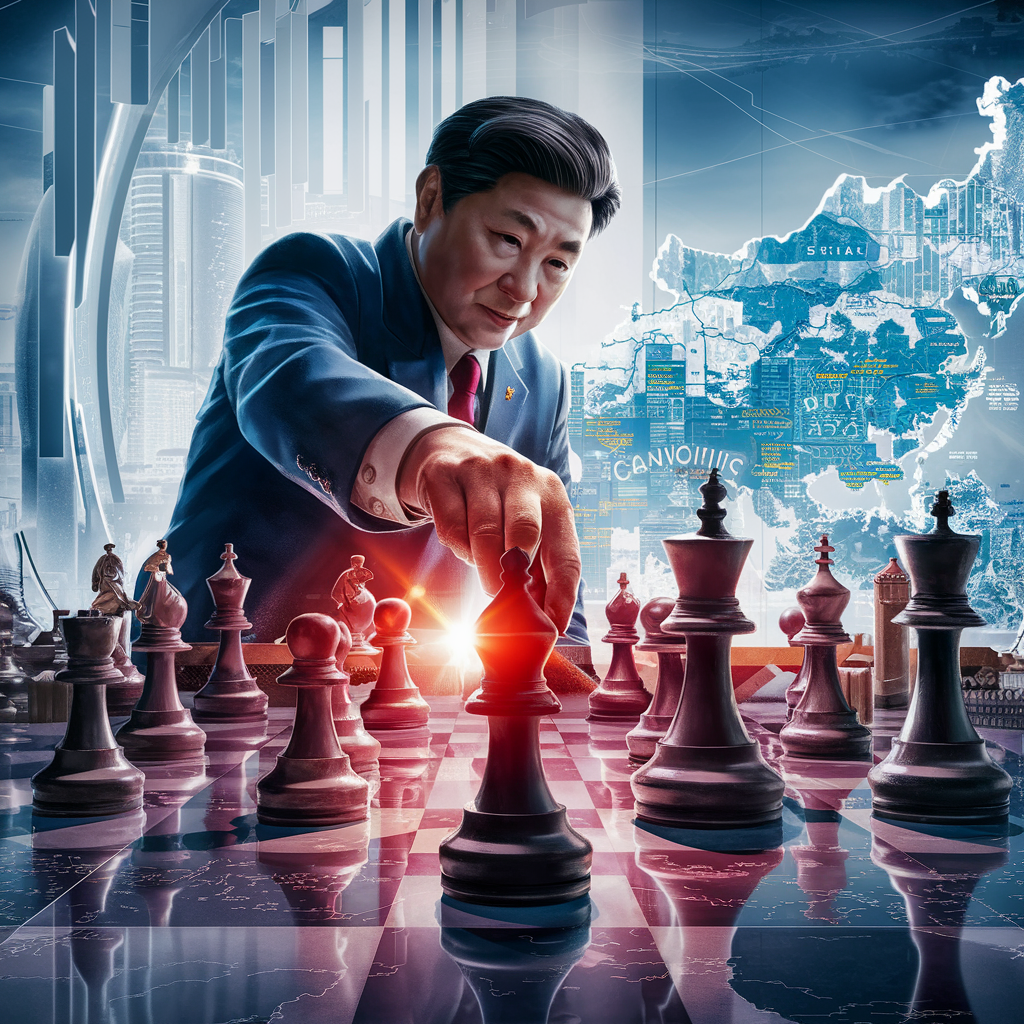China is facing its most significant economic challenge since Deng Xiaoping’s reforms in the 1990s. Despite achieving a 5% growth last year, the pillars of its economic success are faltering. The workforce is shrinking, the once-booming property market is now in decline, and global free trade, which has been pivotal to China’s growth, is unraveling.
In response to these challenges, President Xi Jinping has put forth an ambitious plan to reshape China’s economy. This plan involves blending technology-driven advancement, centralized planning, and a focus on security to position China as a dominant force in future industries. However, the plan is not without its contradictions and potential pitfalls, which could disappoint the Chinese populace and provoke backlash from the international community.
The current mood in China is somber. While there has been a slight uptick in industrial production, consumer sentiment remains low, and deflation looms. Underlying these concerns are deeper anxieties about China’s long-term vulnerabilities, including an anticipated 20% decline in the workforce by 2050 and the enduring challenges posed by a distressed property sector.
President Xi’s strategy revolves around bolstering what officials term “new productive forces,” prioritizing advanced manufacturing industries to create high-productivity jobs and enhance self-sufficiency. However, this approach sidelines consumer spending, neglecting the need for stimulus to revitalize the economy. Additionally, weak domestic demand may necessitate increased reliance on exports, a risky proposition in today’s protectionist global environment.
Moreover, the plan fails to adequately support entrepreneurialism, a vital engine of China’s growth over the past three decades. Entrepreneurs, disillusioned by unpredictable regulations and the specter of government intervention, are increasingly hesitant to innovate and invest. This could stifle innovation and lead to wasted resources.
Read more on the Economy by clicking here
Despite these flaws, President Xi appears steadfast in his course, prioritizing national security over economic prosperity. This shift marks a departure from the openness to economic reform that characterized China’s approach in previous decades. The consequences of this shift could reverberate not only within China but also on the global stage, heightening geopolitical tensions and undermining international trade.
In essence, while China’s plan to revitalize its economy is ambitious, it is not without its challenges and criticisms. The path forward will require addressing the shortcomings of the current strategy and fostering an environment conducive to sustainable economic growth and innovation.




One thought on “President Xi’s Economic Vision: Balancing Ambition and Challenges in China’s Growth Strategy”